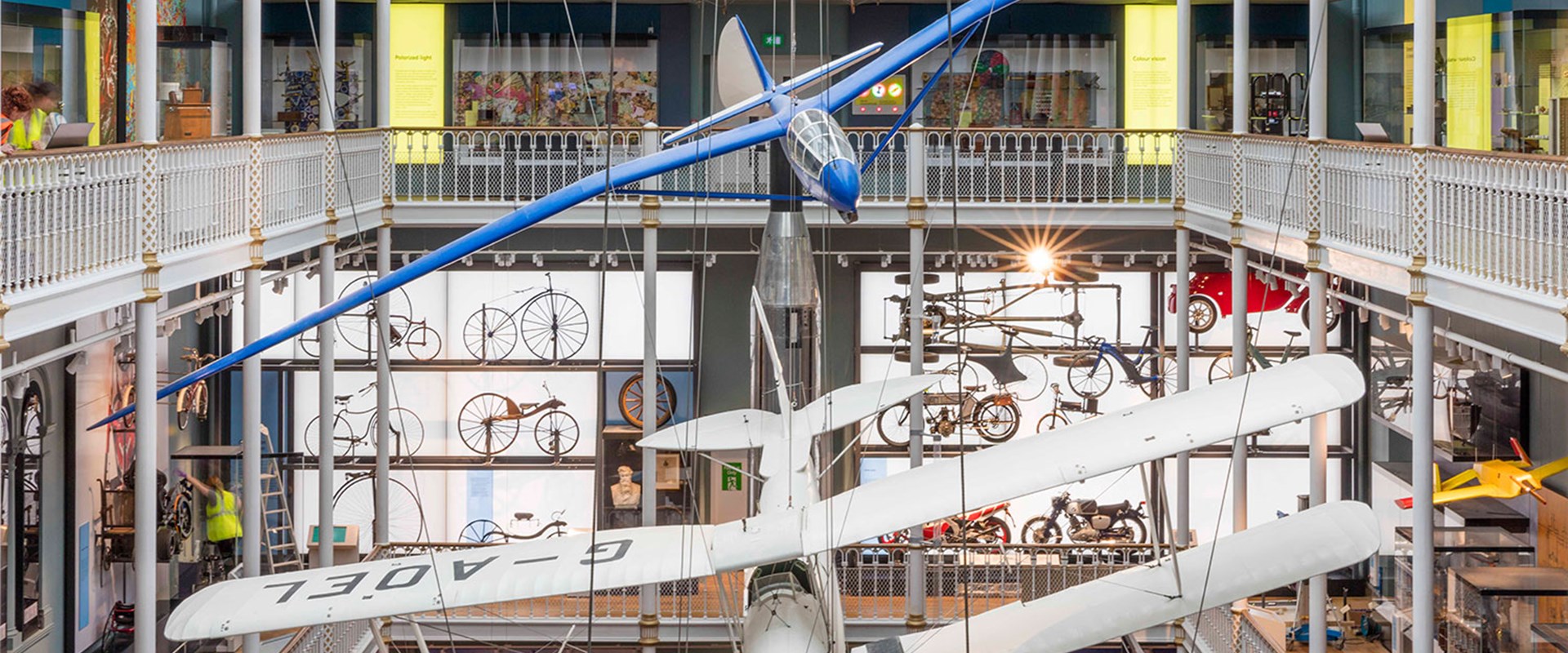National Museums Scotland has received a major international award for the six new Science and Technology galleries which opened last summer.
The National Museum of Scotland was announced as the winner of the 2017 Dibner Award for Excellence in Museum Exhibits at the annual conference of the Society for the History of Technology in Philadelphia.
Dr Gordon Rintoul, Director of National Museums Scotland, said:
“The Dibner Award is the world’s most prestigious award in the field of technology in museums and so we are naturally delighted to receive this level of recognition for our new Science and Technology galleries. Visitor numbers and feedback have already shown how popular these galleries are, and it is gratifying to have the endorsement from our peers for the intellectual rigour and scholarship which underpins these displays as well as our innovative use of interactive components to enhance them.”
The judging panel praised the way that:
“[The Museum] successfully tackled the major challenge of producing a general exhibit on the history of technology through six thematic galleries rooted in scholarly discourse but at the same time making both the chronology of technological innovation and the social issues around that innovation clear to the public. Two particular strengths of the exhibit are its focus on Scottish history in global context and its use of interactives beyond mere video screens”.
Recent winners of the Dibner Award include the Smithsonian Design Museum, the National Museum of American History, the Science Museum in London and the Canada Science and Technology Museum.
The six science and technology galleries opened in summer 2016 alongside four more new galleries devoted to decorative art, design and fashion in a £14.1 million project supported by the Heritage Lottery Fund, the Wellcome Trust and the Scottish Government.
The galleries feature around 1000 objects covering over 250 years of enquiry and innovation, with worldwide resonance in areas as diverse as engineering, medicine, transport, communication, physics and chemistry. Highlights include one of the two oldest railway locomotives in the world; a 2-tonne Copper Cavity from CERN’s Large Electron Positron Collider; three Formula 1 racing cars; the world’s first pneumatic bicycle tyre, developed in Scotland by John Boyd Dunlop; as well as ground-breaking contemporary initiatives like the world’s first bionic arm, a mouse kidney grown from stem cells and Dolly the Sheep. A dramatic atrium showcases a spectacular aerial squadron of iconic aircraft, including Percy Pilcher’s Hawk, the earliest British aircraft, and a 1940 Tiger Moth biplane.
The new state-of-the-art galleries are the latest phase in an £80 million Masterplan to transform the Museum and showcase the breadth of its world class collections. The masterplan will be completed in early 2019 with the completion of two new galleries devoted to Ancient Egypt and East Asia.
Further information and images from: Bruce Blacklaw, National Museums Scotland Press Office on 0131 247 4165 or b.blacklaw@nms.ac.uk
Notes to Editors
- National Museums Scotland is one of the leading museum groups in the UK and Europe and it looks after collections of national and international importance. The organisation provides loans, partnerships, research and training in Scotland and internationally. Our individual museums are the National Museum of Scotland, the National Museum of Flight, the National Museum of Rural Life and the National War Museum. The National Museums Collection Centre in Edinburgh houses conservation and research facilities as well as collections not currently on display.
- Twitter: @NtlMuseumsScot
- Facebook: www.facebook.com/NationalMuseumsScotland
- Instagram: @NationalMuseumsScotland
- The National Museum of Scotland is the most popular museum in the country outside of London (source: Association of Leading Visitor Attractions). The National Museum of Scotland was awarded ‘Gold’ Level Green Tourism Visitor Attraction status in 2016.
- From the archaeology under our feet to the historic parks and buildings we love, from precious memories and collections to rare wildlife, the Heritage Lottery Fund (HLF) use National Lottery players' money to help people across the UK explore, enjoy and protect the heritage they care about. http://www.hlf.org.uk/. @heritagelottery.
- The Dibner Award for Excellence in Museum Exhibits was established in 1985, through the generosity of Bern Dibner, to recognize excellence in museums and museum exhibits that interpret the history of technology, industry, and engineering to the general public. Winning exhibits, in addition to being well designed and produced, should raise pertinent historical issues. Artifacts and images should be used in a manner that interests, teaches, and stimulates both the general public and historians.


